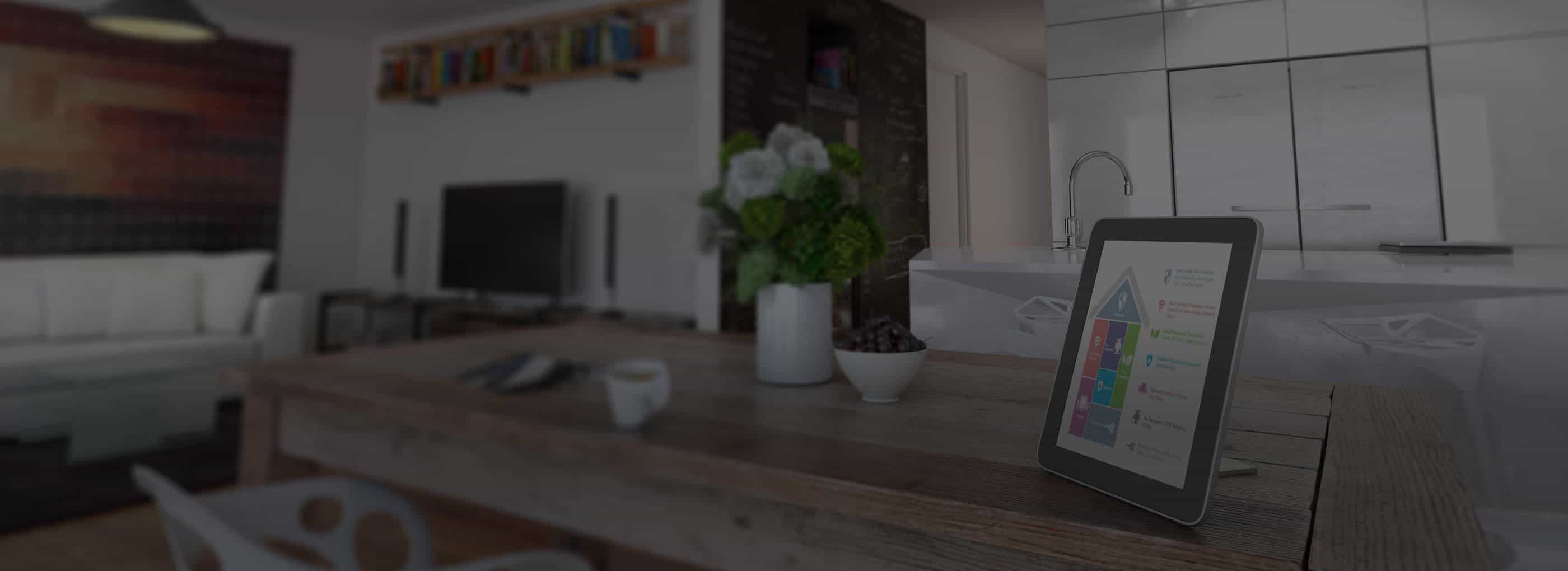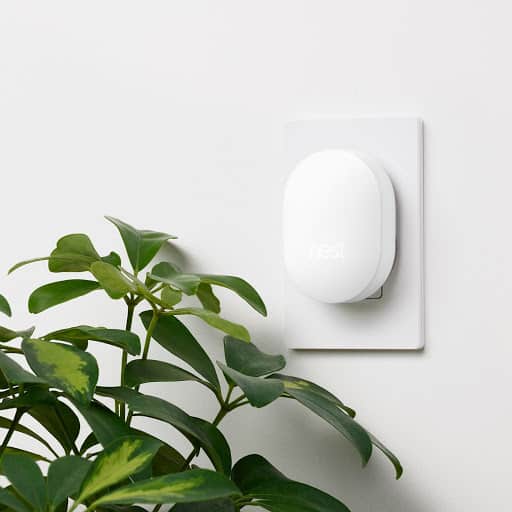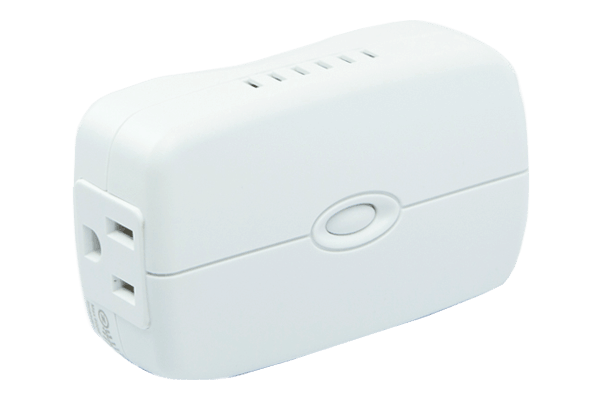Today’s modern smart homes can sometimes feel like they’re straight out of a sci-fi novel. Smart sensors know when you wake up, triggering your smart home to turn up the thermostat on a cold morning.
Then you can ask it to turn on the coffee pot and the lamp next to your favorite chair while you’re still in bed, rubbing the sleep from your eyes.
Some people love this kind of all-knowing system, one that watches your routines, listens to your voice commands, and keeps an eye on your property while you’re away. And there’s something cool and futuristic about a robot vacuum that cleans your floors when you leave for work. Who wouldn’t want that?
Well, if you’re like me and you’re looking to make your house smarter, more secure, and more efficient, Google has a solid selection of smart home devices and technologies that can make these upgrades seamless and easy. One of those devices is the Google Nest Hub, which we’re covering in-depth here today.
>> See Also: Best Home Security Systems
A Smart Home Built With Google Nest
Of all the smart home gadgets Google has available, the Nest Hub acts as the center control panel of a smart home setup. It leverages Google Assistant and the Google Home app to provide users with full control over all of their connected, compatible devices.
You have two options available, the Nest Hub (2nd Gen) or the Nest Hub Max, and they both can help you get started upgrading your home. Want to add simple smart home tweaks, such as voice-activated lights, or go all-in with fully automated routines and complex security features? They can handle it all.
In this guide, we’ll first look at the technologies that make the Google Nest Hub a powerful tool in smart home automation, before detailing how the device works and ways you can use it for a more secure home.
>> See Also: How to Connect Nest Hub to Google Home
Voice Control the Nest Hub With Google Assistant
Google’s remarkable AI-powered digital assistant, named Google Assistant, works like Apple’s Siri or Amazon’s Alexa. It listens to voice commands, answers questions, and controls connected devices. You can find it active in a range of gadgets from the Nest Hub to smartphones, including Google Pixel, Samsung Galaxy phones, and yes, even iPhones (watch out, Siri).
I recently linked Google Assistant with my LG Smart TV, and the experience has worked well. I can search for shows using voice commands (“Hey Google, play ‘Ted Lasso’”) and it responds with speed and accuracy, even when I’m not as articulate as I could be.
>> Check Out: Privacy and Technology Guide
The Google Home App Keeps the Nest Hub Organized
Now that we know how the Nest Hub handles voice commands, let’s look at how it handles information and other devices. That’s where Google Home comes in.
Google Home, specifically made for Android and iOS mobile devices, serves as the central control hub for managing and accessing linkable Google devices. In my experience, the app kept everything organized and running, and it was easily accessible on my Nest Hub and iPhone.
Swipe down on the Nest Hub’s touch screen to find the control settings for Google Home. Here you’ll find control points for a variety of smart devices like:
- Smart door locks
- Lighting
- The Nest thermostat (called “Climate” in the app)
- Security cameras and speakers
- Home automation Routines
They’re all organized nicely in a simple card system, and the Nest Hub lets you browse through your devices by tapping or swiping the screen or using your voice.
>> See Also: Best Outdoor Security Cameras
You can use Google Home to perform a variety of functions, such as cast media from your phone or laptop to a Google Chromecast plugged into your TV, or use it to manage your home automation through Routines.
I have a Chromecast, so I use the combination of Google Home and Google Assistant mostly for turning on my TV and selecting entertainment. I also have a lamp in my living room on a smart plug that has an evening Routine where it turns on at a specific time during the week, and will turn off if I tell Google that I’m watching a movie.
>> Read More: Best Home Security Systems That Work With Google Home
Getting Smart With The Google Nest Hub
So now that you know more about the technology behind the Google Nest Hub, let’s take a look at how the actual devices work.
As mentioned earlier, there are two Nest Hub devices available: the Nest Hub (2nd Gen) and the Nest Hub Max.
Think of them like tablets on speaker stands. You navigate them with touch screen displays and a microphone, and they can play music or video. You can have them display backdrops of rotating pictures so they fit in with your home aesthetic, or show the current time and weather.
The Nest Hub Max takes things to the next level, with an integrated camera that features facial recognition software for personalized workflows and video chats with friends. Both hubs act as visual and voice-command interfaces between you and the rest of your smart home ecosystem.
As far as design goes, these devices are sleek and designed to look good in modern homes.
FYI: The 2nd Gen version has a seven-inch screen and feels light, weighing in at barely a pound. In size, it’s somewhere between a large cell phone and a small tablet. The Max version weighs close to three pounds, has a 10-inch screen and has a much bigger speaker, so it feels bulkier than a tablet.
See More With Google Nest Cameras
Keep in mind that the Google Nest Hub brings more to your smart home than just ease of control and automation. It can also act as a watchdog over your home thanks to the integration of Nest doorbell and security cameras.
Install a Nest Doorbell camera at your home’s doorway for improved security, and you’ll be able to view and communicate with people who are at your door, even if you’re hundreds of miles away.
With intelligent alerts, the motion sensors in the camera will begin recording footage as soon as someone approaches your front entrance. It records clear video in high quality and enables you to have conversations in real time with visitors. You’re always aware of what’s going on, whether it be a delivery person bringing you a package or a neighbor coming over to see how you’re doing.
When connected to a Nest Hub, you’ll be able to see who’s at the door with only a simple voice command or an interaction on the Hub’s touch screen, which links to doorbell cameras seamlessly. Even better, if you’re hoping to avoid the person at your door, the Nest Hub works with hand gestures so you don’t have to give yourself away by speaking.
Pro Tip: For a more in-depth look at the Nest Doorbell camera, take a look at our complete Google Nest Doorbell Review.
Eyes on All Sides
If you need to monitor more outdoor areas than just your front porch, Google also has the Nest Cam Outdoor and the Nest Cam with Floodlights. They both offer:
- Weather-resistant designs
- Motion alerts
- Two-way talk
- Up to one hour of recording if your home Wi-Fi network goes down
You’ll have safety around the clock thanks to their night-vision capabilities, and the floodlight camera can scare potential intruders with a blast of light. Just like the doorbell camera, you’ll be able to browse live video feeds, view stored footage, and receive warnings for any suspicious activity when you pair these cameras with your Nest Hub and smartphone.
>> Read More: Best Security Cameras With Night Vision
FYI: Google’s outdoor cameras come with standard features, but you can find expanded security measures through Google’s subscription service, called Nest Aware, which we’ll detail down below.
Security inside your home is just as vital, and Google offers a wired security camera option called the Nest Cam Indoor. Much like the outdoor versions, this camera provides in-home monitoring with high-definition video quality and smart notifications. These cameras link easily to your Nest Hub, making it possible for you to monitor your household while you’re away, whether it be to check on your animals or to make sure your house isn’t full of smoke.
There’s only a wired version available for the indoor camera, so keep that in mind if you prefer a wire-free aesthetic. The Nest Doorbell and outdoor cameras without floodlights offer battery-powered, wireless options.
And you guessed it. We have an expert review of Google’s Nest Cam that you can read for more information.
>> Check Out: Best Hardwired Security Systems
Getting the Most out of Your Home’s Security With Routines
The Google Home app has a feature we mentioned briefly called Routines.
Routines let you schedule and automate processes in your smart home so that all of your connected devices work together for an upgraded security system, all controlled by the Google Nest Hub.
For example, you could create a “Leaving for Work” Routine that puts the thermostat to rest, lowers the lights, drops the front window blinds to keep prying eyes out, and plays music on your speaker for your dog. As long as all of these devices are compatible with Google’s ecosystem, you’ll be able to tell Google Assistant that you’re leaving for work and it will happen automatically.
Likewise, if you’re going on vacation, you could set up a Routine called “Finally a Vacation” that does all of the above, plus puts your smart speakers on listening duty so that the sound of breaking glass or a smoke alarm will send alerts to your smartphone. Even better if you have the Nest Cam Indoor set up on the hub to see it happening.
FYI: Google Home has several Routines already set up in the app so you don’t have to start from scratch. You can use them as they are or as templates to extend their functionality with additional instructions.
Integrate the Google Nest x Yale Lock and you’ll also have a tamper-proof, keyless deadbolt that lets you lock and unlock your doors from anywhere with an internet connection. Does the dog walker need to come inside? Give them a pass code or unlock the door from your phone.
>> Check Out: Best Home Security Systems for Pet Owners
This smart lock replaces any deadbolt you have in the house, pairs well with Google Home Routines, and will send alerts if anyone tries to tamper with it. One thing to keep in mind with this lock is that it runs on battery power, so if the battery gets depleted and the door is locked, make sure you won’t be stuck out in the cold. You can quickly charge it with a nine-volt battery.
More Security Features With a Subscription
The majority of the smart home features, such as connecting devices to Routines, are included with Google’s devices. However, Google Nest Cameras and Doorbells can be expanded with a subscription service called Nest Aware.
The service allows you to add “Intelligent Alerts” to cameras so that they recognize faces and sounds as familiar, reducing the number of notifications sent to your devices. The Nest Camera placed in the top three of our Best Facial Recognition Cameras, so “Intelligent Alerts” may be a great option.
FYI: The Nest Aware subscription starts at around $8 per month but may vary depending on the options you choose.
The subscription can also allow wired (not wireless) Nest Cameras, both indoor and outdoor, to record and store a full 24 hours of video footage, along with up to 60 days of event video history in the cloud.
Event video history happens when a camera notices something suspicious and outside of its intelligent alerts recognition. It will capture major moments of what’s happening in longer video clips for viewing in real time or at later dates.
This kind of video history can be a time saver because you don’t have to go back through live video footage and search for the action.
More Efficient, More Secure, More Entertained
The capabilities of the Nest Hub go far beyond those of a simple convenience device. Sure, it can play music and TV shows and tell you recipes while your hands are busy cooking dinner, but it truly shines as a watchful guardian and security control panel. It gives you access to an all-encompassing home security system that’s simple to operate and maintain thanks to the ecosystem that Google offers.
We compared the Nest ecosystem with another popular home security system called Arlo. And if you’d like to see which system offered the better options, read our Arlo vs. Nest Comparison Guide. Spoiler alert: Nest performed quite well.
As much as we emphasize the benefits of a smart home, there can be downsides to having so many smart devices and connected technology. Take a look at our Guide to 5 Smart Home Dangers we suggest to watch for in your smart home journey.
All in all, the Google Nest Hub and the technologies it integrates have made it easier than ever before to turn your home into a smart home. The installation of security cameras, doorbell cameras, and locks from Nest takes the protection of your house to a whole new level, giving you increased peace of mind and the ability to maintain control, even when you’re not there.





